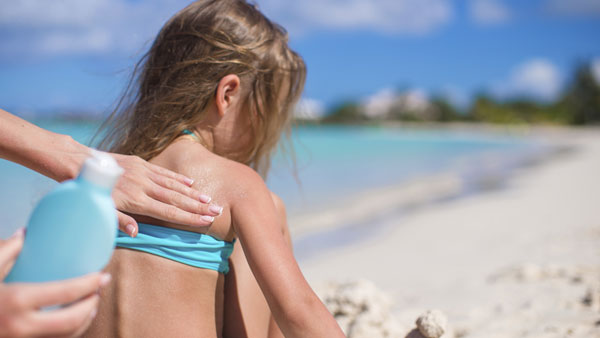Copious amounts of sunscreen are sold each summer holiday in an effort to protect South Africans, particularly children from both the damaging ultra-violet (UVA and UVB) rays of our harsh Summer sun. But when the children return to school, the dogged persistence seems to wane.
This month, millions of pupils returned to school – many without inadequate sun protection policies in place, leaving them exposed to sunburn.
Even though there is more public awareness around sun protection, it doesn’t appear to be a top priority at the majority of SA schools since other pressing issues such as nutrition and violence seems to precedence. However, interventions at school level are critical in curtailing SA’s high incidences of skin cancer and should receive more attention.
Local research studies show that sunburn in children significantly increases the risk of developing skin cancer and melanomas – the deadliest form of skin cancer – later in life. It is therefore vital that children are protected from the sun not only when at the beach or the swimming pool, but at school as well.
In South Africa, skin cancer remains the most common cancer with about 20 000 reported cases and 700 deaths a year, making it a significant health problem. According to CANSA, most of a person’s lifetime exposure to the sun occurs before the age of 18, which makes sun-safe policies a must at pre-schools, primary schools and high schools.
As in Australia – where skin cancer rates are amongst the highest in the world – SA schools should adopt similar sun-smart policies. Some of these interventions include pupils having to wear a broad-brimmed hat as part of their summer school uniform and have no-hat-no-play policy. Plenty of shade should also be provided around the playground in form of trees or built structures. The use of sunscreen is also encouraged during outdoor athletic or sporting events.
In addition to these measures, scientific studies have validated the health properties of Rooibos on skin, which may assist with various skin ailments including the prevention of the development of cancer. Thus, parents whose children have been badly sunburnt may be able to turn to Rooibos for help.
Dr Tandeka Magcwebeba, a post-doctoral fellow at Stellenbosch University who has carried out extensive research on the anti-cancer properties of Rooibos on the skin, says it topical application may offer protection against the early stages of cancer development in the skin.
“Once the skin has been exposed to the sun’s UV rays, Rooibos extracts have the ability to remove precancerous damaged cells and also block the onset of inflammation. It does so by stopping the multiplication of cancerous cells and removing these cells through programmed cell death – in other words, prompting the cells to commit suicide.
“It’s the abundance of polyphenols (antioxidants) – natural compounds found in Rooibos – which gives its restorative power,” explains Dr Magcwebeba. “These compounds are linked to the prevention of various chronic disorders, including skin cancer. Preliminary findings show that Rooibos extracts are more effective during the early stages of skin cancer development as they are able to facilitate the removal of UVB damaged cells thereby delaying their progression into a tumour.”
If your child does end up with nasty sunburn, anecdotal evidence suggests that soaking him/her in a lukewarm bath of rooibos tea two to three times a day can help reduce inflammation, which is likely due to the tea’s anti-inflammatory properties. This, in combination with the abundance of antioxidants present in Rooibos tea will help to naturally accelerate the healing of the skin.
It is still uncertain how much rooibos extract is needed to prevent the development of skin cancer, but according to science, children (and adults) who spend a lot of time in the sun may benefit from using cosmetics, sunscreen and after-sun skincare products containing Rooibos extract.
For more information on rooibos’ healing potential, visit www.sarooibos.co.za


